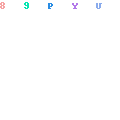In the B2B (Business to Business) universe , segmentation is a fundamental strategy for the sales process, as it helps companies better understand the specific needs and challenges of different types of customers, allowing for more precise personalization of marketing and sales approaches.
This results in greater efficiency, better use of resources and a higher return on investment (ROI).
Why is Market Segmentation important?
The importance of market segmentation in the B2B universe is directly related to the personalization of marketing and sales strategies.
In a B2B environment, where purchasing decisions are email lists australia more complex and involve multiple decision makers, segmenting the market effectively can make all the difference.
Well-done segmentation allows companies to adapt their messages and offers to the specific needs of each segment, increasing the relevance of communication and commercial approach.
Additionally, focusing on specific segments increases the efficiency of marketing campaigns, reducing costs and improving ROI.

Studies show that companies that implement B2B segmentation strategies can increase their conversion rates by up to 150%.
What is the difference between B2B and B2C segmentation?
B2B segmentation differs significantly from B2C (Business to Consumer) segmentation.
In B2B, purchasing decisions are more complex, involving multiple decision makers and longer purchasing processes. Companies need to consider factors such as the product life cycle, specific business needs, and the impact of purchasing decisions across the organization.
On the other hand, B2C segmentation often focuses on simpler criteria such as demographics, purchasing behavior, and personal preferences.
In B2B, segmentation also needs to take into account the complexity of business relationships. For example, a company that provides IT solutions can segment the market based on sectors that have specific demands for technology, such as healthcare or finance, and develop customized offerings for each of these sectors.
Types of B2B Market Segmentation
There are different approaches to segmenting the B2B market, each with its own set of advantages and challenges. Here are the main types of segmentation:
1. Segmentation by Company Size
This segmentation classifies companies based on their size , such as small, medium or large corporations.
The size of the company can directly influence purchasing needs and the available budget.
For example, a large company may be more interested in scalable and customized solutions, while a small company may prioritize more affordable and easy-to-implement products.
2. Segmentation by Geographic Region
In this type of segmentation, companies are categorized based on their geographical location.
This method is particularly useful for companies operating in different regions or countries, allowing them to adapt sales strategies to the cultural, economic and regulatory characteristics of each location.
Geographic segmentation is also effective for companies that need to manage the logistics of distributing products or services.
3. Segmentation by Sector
Segmentation by sector considers the main economic activities of companies, such as technology, health, manufacturing, among others.
This approach allows companies to tailor their offerings to the specific needs of each sector, creating solutions that meet the unique challenges of each industry.
At this stage, it is very important to understand the segmentation by CNAEs (National Classification of Economic Activities) . It classifies all economic sectors in Brazil into no less than 1,301 subclasses, divided into 21 sections, 87 divisions, 285 groups and 673 classes.
3. Segmentation by Needs and Problems
This strategy focuses on the specific needs and problems that companies face, allowing for a more personalized approach to solving their challenges.
For example, a company struggling with process automation can be targeted and approached with automation software solutions.
Where to start with B2B Market Segmentation?
Paulo Krieser, CEO of Econodata, suggests that the first step towards B2B market segmentation is defining the Ideal Customer Profile (ICP) .
“You need to define your ICP. Start by choosing a very specific niche and work deeply on it. Take a smaller number of companies, 500 to 1,000 companies, that are similar to each other, that are part of a segment, of a deep segmentation and start working on that basis”, explains Krieser.